When some people think of the deserts, they imagine a place with harsh elements, void of life where no plants can survive.
But on the contrary, there are several desert plants with specific adaptations – cactuses inclusive – that have made even the driest areas of the desert their domain. Some of these plants even thrive well in our present-day homes and gardens.
Put together is a list of the different types of plants in the desert that are our favorite and the most fun to grow in your desert gardens.
Table of Contents
Growing Desert Plants in Your Garden
Given the harsh weather conditions, aridity, dryness, high humidity, extreme fall in temperature, low precipitation, and lack of constant water, in desert lands.
Still, they are anything but lifeless, and many plants have adaptive features that help them to thrive in deserts, and so have other creatures.
These desert plants wear a much more different look from the typical landscape plants found in other regions. They have pointed, swollen, and tiny leaves.
The unfamiliar appearance of the desert plant is because they have modified themselves to fit the extremes of aridity and heat by using both behavioral and physical mechanisms.
Thanks to their rare but beautiful looks, which serve as a tourist attraction, many researchers, biologists, and home gardeners are interested in using desert plants to beautify their gardens or as samples for experiments or study purposes.
Landscaping is the process of growing desert plants outside the desert. It extracts and saves water with the help of native plants. Hence, desert plants have become well-known for landscaping because of their ability to tolerate drought.
Fortunately, there are varieties of desert plants that look amazing and not difficult to maintain that can do well in a glass terrarium or backyard environment.
Many gardeners love the green aloe vera, which adds a striking look to the garden and is perfect for a natural home remedy for skin conditions like sunburn.
These desert plants are classified into three main types: Wildflowers, and Trees, Cacti and Succulents, Shrubs, and Grasses. In this article, there are plants that outline each kind of desert plants.
Read Also: Different Types of Plants in the Ocean
Different Types of Plants in The Desert
Below is a list of the different types of plants in the desert and their features:
1. Ghost Plant
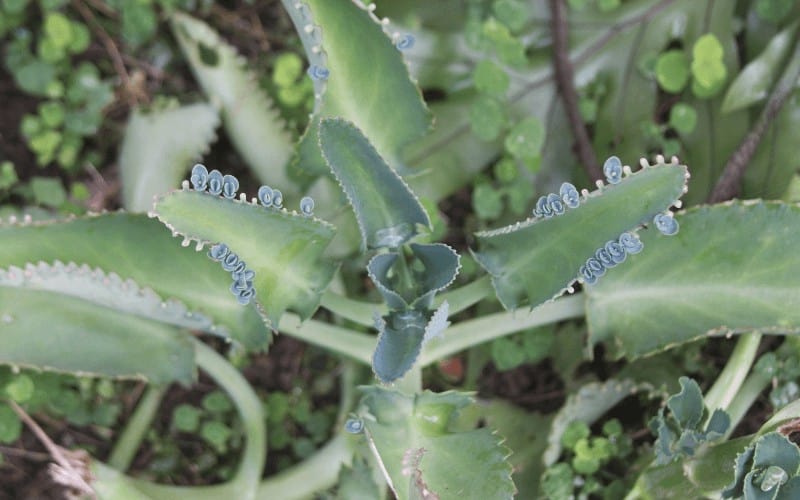
Scientifically, the ghost plant bears the name Graptopetalum paraguayense. Often referred to as one of the most well-known succulents in recent times, it is also one of the easiest to care for in your backyard garden.
Odds are, you've seen them in the famous gardens and indoor terrariums because of their ability to blends so well with the green and home décor.
The ghost plants display different colors ranging from pinkish yellow to bluish-grey when new rosettes form at the tips of their stems. But, these beautiful colors they exhibit are strictly dependent on the degree of sunlight they absorb during day time.
During springtime, you can observe the ghost plant creating brilliant yellow blossoms, and old leaves tumble off after spring.
2. Pancake Prickly Pear
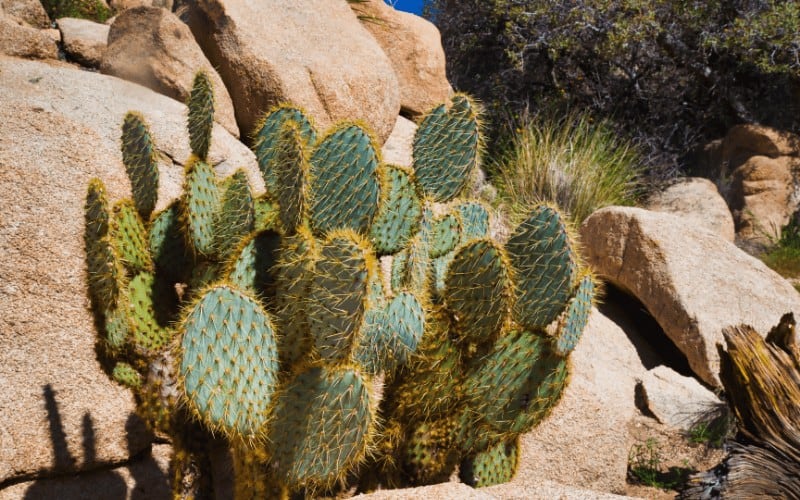
You can easily recognize the Pancake Prickly Pear in a split second because this species of cactus is an obvious desert plant that is usually found in neighboring regions outskirt of Mexico and the United States.
It has a 'pancake-like flat arm that can grow up to 7 feet tall. Also, it has a round pad emerging from a thick, round trunk. The pads are usually four to six inches in length, 9 inches wide, and .75 inches thick and with spines.
Read Also: Types of Plants in The Rainforest
3. Barrel Cactus
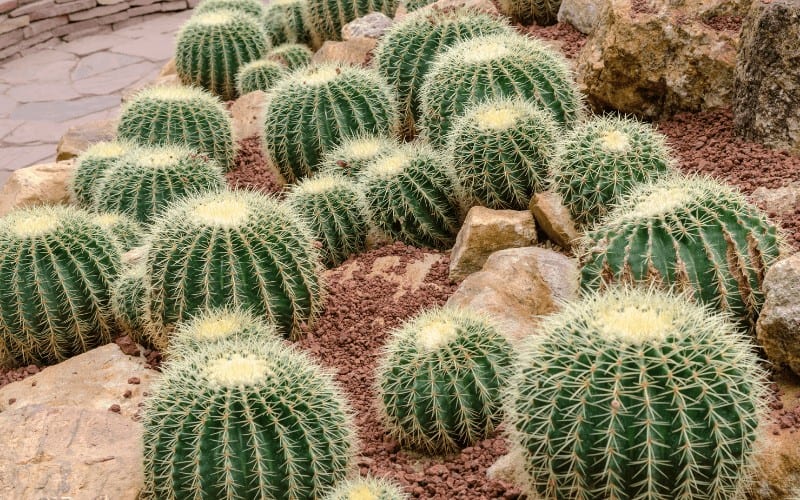
Although it originates from deserts in the Sonora, Chihuahua, and Mojave lands, the Barrel cactus is one of the most easily found plants in deserts across the planets.
As a low growing plant, the barrel cactus is very adorable and attractive with a bright flower in its middle. However, you have to take care of the spines of the barrel when trying to pluck it as it has hazardous types.
Although the pancake Prickly Pear may seem like the largest, the Barrel Cactus is one of the most widely known cactus species used as succulents.
4. Pencil plant
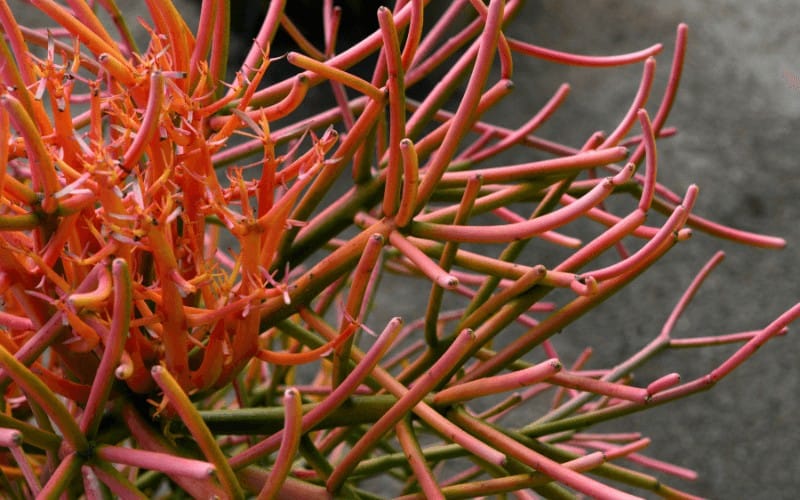
A popular choice amongst modern landscapers, these succulents are mostly used in drought-tolerant landscaping or xeriscaping. Also known as Euphorbia tirucalli, the plant's green pencil-like sticks turn bright coral when the plant is under stress.
Succulent stress can come in the form of many factors, including the plant having too little water, being too cold, or planted in nutrient-poor soil.
Gardeners commonly deprive this succulent, as well as several other types of succulents, of nutrients or water on purpose to encourage the plant to display its bright and showy colors.
Read Also: Creeping Tyme Vs Blue Star Creeper
5. Oleander (Nerium oleander)
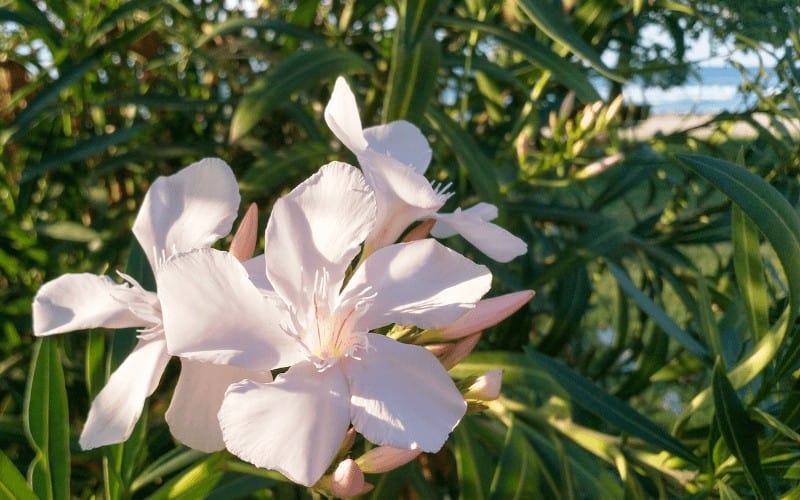
The Oleander plant is one of the few desert plants that can resist and thrive no matter the weather condition, even during summers. This plant is one of your best bets for a garden desert plant.
Not only is it effortless for the seeds to germinate, but these good old beauties can also endure arid conditions, dreadful reflective soil, and any other harsh elements the desert houses.
They are usually dwarf-like in appearance but display bright varieties of colors like red, white, and pink. If you are quite observant, you might notice it also has a type that comes as a double flower as well, which looks like plants arranged in clusters.
6. Dune Evening Primrose
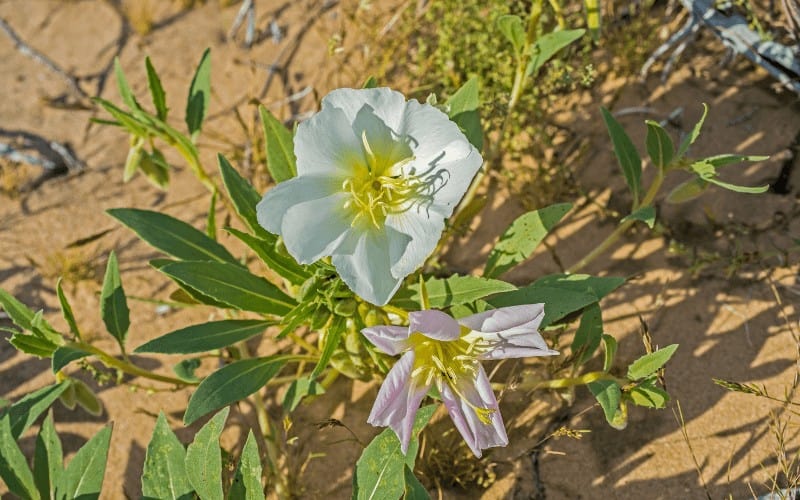
Dune Evening Primrose is a scented and beautiful white flower with a bright yellow middle bloom, which opens at dusk and closes at sunrise from January through May.
Also known as desert primrose, this plant is a beauty to behold and is a creeping plant found crawling below 3500 feet in sandy and open desert areas close to dunes.
Its characteristic features, such as its dispersed and busy grey-to-green colored leaves, which grow to a height of about 4 inches, coiling to form a basal rosette, are unique.
You will find desert prime rose in the Mojave, Sonoran, and Great Basin deserts in California, Arizona, Nevada, and Utah.
7. Paddle Plant
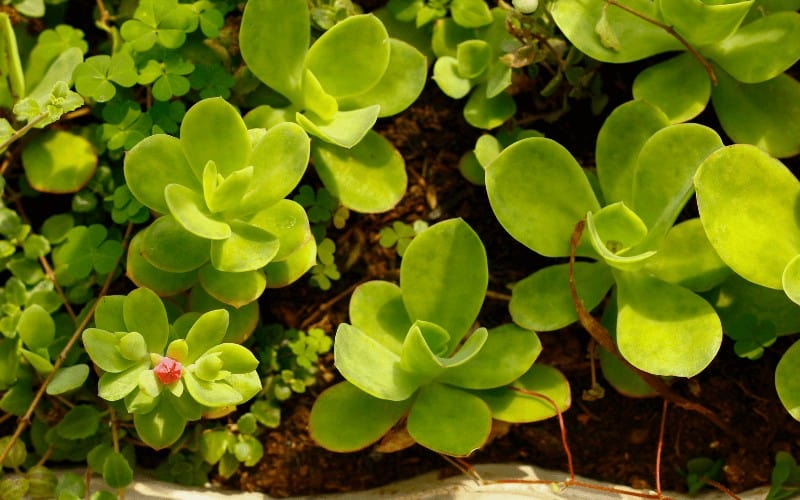
The paddle plant is famously called "red pancakes," and this humorous nickname comes from its big-sized, disk-shaped, bright red foliages. They thrive well in hardiness zones 9 to 11 and make a stunning look in any xeriscape garden they are part of.
A single flowering stem emerges in the center of the paddle plant as it approaches maturity. Just like other succulents, the paddle plant is classified as a monocarpic plant, which is a name for plants that usually develops a flower towards the end of their lifecycle.
However, when landscaping the paddle plant in your backyard garden — to preserve your paddle plant for regrowth, cut off the stem and replant!
8. Creosote Bush
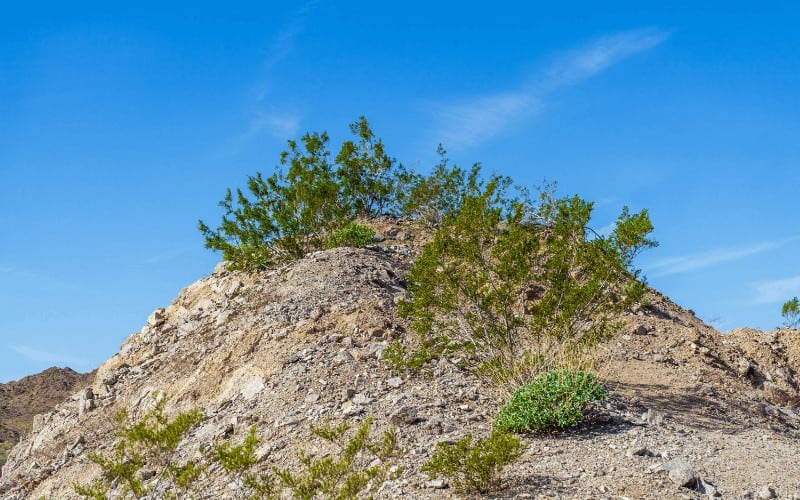
Another plants of the desert, the Creosote Bush plant is a shrub you will find in the plains and desert slants of Nevada, Texas, New Mexico, California, and Arizona.
They are also called greasewood and have tiny green leaves, adorned with an outer layer. Its blooms are bright yellow, about the same size as their leaves, and they can extend upwards to a height of about 10 feet.
During their early growth phase, they come off as fragile. Still, in the later years, Creosotes develop into quite hardy plants, and they can be predators overtaking nearby plants that spread over their resources and water.
Read Also: Sweet Potato Companion Plants
9. Living Stone
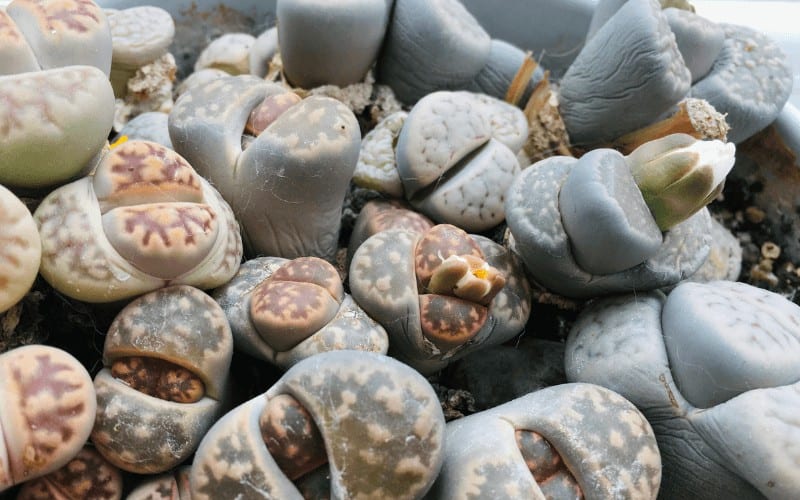
Living stones, with the other name lithops, are desert plants associated with the southern coastline of Africa. In South Africa, the living stone plants collect not up to 2 square of rainwater annually.
The acute climate conditions in that region cause the live stone plant to disperse most of its leaves, leaving its structure with just about one or two leaves, which are joined together underneath the base where the root system holds them together.
The lithops is a typical example of evolution at its finest. These desert plants have managed to evolve from their needs to effortlessly adjust to their environment by reducing their amount of surface exposure to sunlight, thus protecting themselves from predators.
Upon first sight, you may mistake their leaves for stones or pebbles; this pebble-shaped leaf allows the plant to store water during the rainy season.
10. Hibiscus Plant
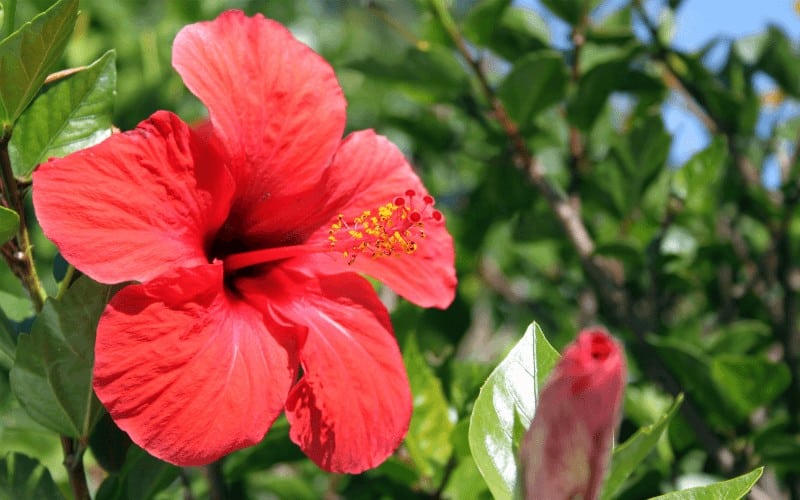
As a flowering type of plant, the hibiscus thrives well in the desert and tropical areas because it loves the sunlight and warmth. You'll find the hibiscus growing in places like this all around the world.
The beautiful and unique design of the hibiscus enhances its beauty. Because of its fantastic appeal, it is often used as an ornamental flower for eclectic home décor.
It has economic values such as its red petals, a source of tea for tea brewers, and its medicinal value, such as vitamin C.
Recommended Readings:
- Citronella Plant Care
- Top 10 Medicinal Plants
- Herbaceous Plants Vs Woody Plants
- Flowers That Starts With A-Z
Conclusion | Plants of the Desert
With so many desert plants available, it may be difficult for you to identify and choose which one is best for your home garden.
To make your decision-making lighter, we put together this article featuring some of the beautiful types of plants In the desert that you can easily landscape in your backyard garden, even if you are not a pro gardener. Identify which ones are the best for your home and garden.
So, when next you come across that beautiful desert plant, you can quickly tell it apart from others.




